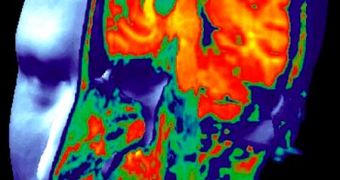In a new set of scientific experiments, carried out on individuals aged between 44 and 88, it was determined that personality traits may be linked to the rate at which the brain shrinks as people get older. The correlation was never-before hinted at, and psychologists at the University of Washington in St. Louis, who conducted the work, were surprised to find it. The investigation was carried out on 79 volunteers, whose brains were tracked using Magnetic Resonance Imaging (MRI).
“This is a first step in seeing how personality might affect brain aging. Our data clearly show an association between personality and brain volume, particularly in brain regions associated with emotional and social processing. This could be interpreted that personality may influence the rate of brain aging,” says WUSL Department of Arts & Sciences assistant professor of psychology, Denise Head, PhD. The expert adds that things are still very confusing at this point, in the sense that this could be a case of “the tail wagging the dog.” In other words, it may be possible that changes in the brain are what influence personality, and not the other way around.
When looking at the results each participant obtained, the investigators noticed that those who had higher scores in neuroticism traits tended to exhibit frontal and medial temporal brain regions with lower volumes of gray matter than normal. Conversely, in the case of those who ranked high in conscientious traits, the amount of gray matter was greater than the average. An additional connection was also found between personality and the orbitofrontal cortex, which plays an important role in processing social and emotional cues.
“There are lots of nonhuman animal studies that suggest that chronic stress is associated with deleterious effects on the brain, and this helped us form the hypothesis that we'd see similar effects in older adults. We assumed that neuroticism would be negatively related to structural volume. We really focused on the prefrontal and medial temporal regions because they are the regions where you see the greatest age changes, and they are also seats of attention, emotion and memory,” explains graduate student Jonathan Jackson. He is the first author of a new paper detailing the findings, which appears in the latest issue of the respected scientific journal Neurobiology in Aging.
“We found that more neurotic individuals had smaller volumes in certain prefrontal and medial temporal parts of the brain than those who were less neurotic, and the opposite pattern was found with conscientiousness,” Jackson adds. The team currently plans to continue their investigation, in order to determine which phenomenon influences which. “Right now, we can't disentangle those two, but we plan to in the future by conducting ongoing studies of the volunteers over time to note future structural changes,” Head concludes.

 14 DAY TRIAL //
14 DAY TRIAL //